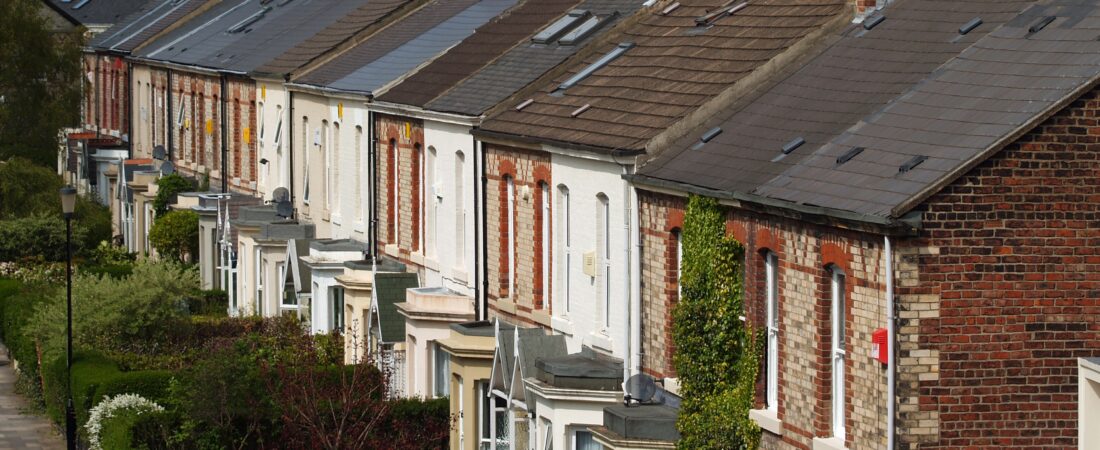The English Private Landlord Survey is a nationwide survey for landlords (and letting agents acting on behalf of landlords) who own or manage private rental properties in England.
It offers helpful insights into how landlords find tenants, rent out, manage, and look after their properties. The survey also looks at how changes in laws and policies might affect the private rental market.
The latest survey was published in December 2024, and it’s typically released every three years, offering an interesting comparison over time.
We’ve put together a summary of the survey’s key findings to keep you up to date and give you practical insights.
- What’s the average landlord like?
- What sort of properties do landlords typically let?
- How do landlords find tenants?
- How do landlords handle rent in England?
- How do tenancies end in England?
- How aware are landlords of the Renters’ Rights Bill?
Save money on high agent fees – advertise your property on Rightmove and Zoopla for just £49. Get Started
What’s the average landlord like?
The typical landlord in England is 59 years old, with around two-thirds aged 55 or older – this hasn’t changed much since 2021. If you look at landlords with bigger portfolios, they’re even more likely to be in this age group (aged 55 or older).
As for ethnicity, most landlords identify as white, with 8% identifying as Asian, 2% as mixed, 2% as black, and 1% as other.
When it comes to gender, things are shifting. Half of landlords are now women, up from 44% in 2021. Men still dominate the larger portfolios, though, with 63% of landlords owning five or more properties being male.
The largest share of landlords is in London (27%), followed by the South East (17%) and South West (11%). The North East has the smallest number of landlords, at only 4%. As you’d expect, most landlords tend to rent in the same region they live in.

Why do landlords get into property?
The main reasons landlords get into the rental market are to add to their pension or because they prefer investing in property over other options.
Just over half of landlords bought their first property to rent it out, while a bit more than a third planned to live in it themselves. Only 6% of landlords reported they inherited their first rental or got it by other means.
As for how they paid for it, the majority used a buy to let mortgage, while 35% went with other types of loans. Just under a quarter didn’t borrow any money at all.
You might also be interested in…
- DIY Landlord: How to Rent Out Your Property Without an Agent
- What is Subletting and is It Illegal in the UK?
- What the New Decent Homes Standard Means for the Private Rented Sector
- Tenant Fees Act 2019: Banned Tenant Fees and Payments for Landlords
- Has the Renters Reform Bill 2024 Been Passed?
How much do landlords actually earn?
In 2024, over a third of landlords were retired, while 29% worked full-time and 11% worked part-time.
Landlords with more properties were more likely to be self-employed as a landlord, with 40% of those owning five or more properties reporting this.
On average, landlords earned £25,000 in income outside of rent over the past year, up from £20,000 in 2018 and pretty similar to £24,000 in 2021. Just over a quarter of landlords earned £50,000 from sources other than rent.
When it comes to rental income, landlords made an average of £19,200 last year, compared to £15,000 in 2018 and £17,520 in 2021. Half of landlords earned less than £20,000 from rent, while 17% took in £50,000 or more.
Keep in mind, this figure doesn’t represent the profit landlords actually made, since expenses such as mortgage payments, repairs, maintenance, insurance, and other costs need to be deducted.
What sort of properties do landlords typically let?
In 2024, over 4.2 million deposits were registered with a Tenancy Deposit Protection scheme. The number of deposits doesn’t exactly match the number of properties, as some places, like HMOs, have multiple deposits, while some properties may not have a deposit at all.
Most landlords reported they let out terraced houses (44%), followed by purpose-built flats (39%) and semi-detached homes (31%).
Fewer landlords have detached houses (12%) or rooms and bedsits (5%). These figures show what kinds of properties landlords have, not what’s most common in the rental market overall.

(Source: English Private Landlord Survey 2024)
How do landlords find tenants?
While most landlords still rely on letting agents, a growing 28% are now finding tenants through platforms like OpenRent, which offers a cheaper and more efficient alternative.
This isn’t surprising, as with OpenRent you can save over £1,851 per property and usually find a tenant in just six days.
Plus, with our Rent Now service, you don’t need to stress about compliance – we’ll provide you with a legally sound tenancy agreement and support you through the whole process.

(Source: English Private Landlord Survey 2024)
About 43% of landlords have asked for rent in advance along with a deposit, and 6% ask for both rent in advance and a guarantor. Another 14% ask for a guarantor but not rent up front. Nearly 40% of landlords don’t ask for either.
If the Renters Rights Bill passes into law, that figure is bound to change, as one of its main proposals is for rent taken in advance to be limited to one month’s rent.
Last but not least, only 15% of landlords said they’re currently using a deposit replacement scheme for at least one of their properties.
What types of tenants do landlords go for?
The most common types of tenants landlords rent to are couples without children (46%), single tenants (46%), and couples with children (42%).
Fewer landlords reported renting to lone parents (24%), house sharers (16%), or extended families (4%), which is similar to trends seen in 2021 and 2018.

(Source: English Private Landlord Survey 2024)
In terms of employment, landlords reported that most of their tenants are in office-based jobs or professional roles (59%), followed by manual or blue-collar work (36%).
Fewer landlords rent to people on Housing Benefit or Local Housing Allowance (18%), Universal Credit (16%), or retired tenants (16%). About one in 10 landlords rent to students or workers from outside the UK.
Around 18% of landlords said some of their current tenants are on Housing Benefit or Local Housing Allowance.
Enjoy the benefits of self-managing your property without the hassle – let us show you how! Discover Rent Now
Why are landlords unwilling to rent to certain tenants?
Nearly all landlords (95%) said they wouldn’t rent to at least one type of tenant. The most common reasons were tenants with a history of rent arrears (90% unwilling) or those receiving housing support like Universal Credit (38% unwilling).
Landlords were also reluctant to rent to people with CCJs, students, or those needing property adaptations. A smaller group (13%) said they wouldn’t rent to tenants with dependent children.
Landlords with just one property were most likely to say they wouldn’t rent to tenants receiving housing support (40%), while landlords with five or more properties were the least likely to feel this way (34%).
The biggest concern for landlords not willing to rent to tenants on housing support (of those not willing to let to this group) was a perceived greater risk of late payments or unpaid rent (73%). Others said they were worried that benefits wouldn’t cover the full rent (65%) or that payments would go directly to the tenant rather than the landlord (55%).
A similar number of landlords said they felt there was a greater risk due to plans to scrap Section 21.
How do landlords handle rent in England?
58% of landlords reported they increased the rent on their most recent new tenancy, a quarter kept it the same, and just 3% reduced it. This is up from 45% in 2021.
When renewing or extending tenancies, about half of landlords increased the rent, 39% kept it the same, and just 1% dropped it. Those with larger portfolios were more likely to increase rent.
For new tenancies, the median rent increase was 11%. So, for example, if a property was rented for £1,000, the new rent would be £1,110 for the next tenant. Around 35% of landlords raised the rent by 15% or more.

(Source: English Private Landlord Survey 2024)
For renewed or extended tenancies, the average increase was 8%. Of those, about two out of 10 landlords raised rents by 15% or more.
The most common reasons landlords gave for raising or keeping rents the same were to match the market rate (79% and 59% respectively). Others said they increased rent because their letting agent advised it (40%) or to cover higher mortgage costs (29%).
Landlords who reduced rent mainly did so to avoid lengthy void periods.
How do tenancies end in England?
Most landlords (44%) said their last tenancy ended because the tenant gave notice at the end of their periodic tenancy. Around a quarter said the tenant simply didn’t want to renew, and 13% had a tenant leave before the tenancy was officially over.
It’s way less common than people think, for landlords to decide to end a tenancy themselves. Only about one in 10 landlords said they asked the tenant to leave or chose not to renew.

Last but not least, 6% of landlords chose to evict a tenant. While still a small number, this is higher than in 2021, when only 3% of landlords evicted a tenant, likely due to the eviction restrictions during the Covid-19 pandemic, the survey explains.
For those who did evict, the most common method was issuing a Section 21 notice (70%). The rest were almost equally split between going down the Section 8 route or asking tenants to leave informally.
Why do landlords end tenancies in England?
For landlords who decided to end their last tenancy, the most common reasons were that the property wasn’t being cared for (43%) or the tenant had fallen behind on rent (42%).
About one in four landlords ended the tenancy because of issues like anti-social behaviour or because they wanted to sell the property.
Lastly, about one in 10 landlords said they ended the tenancy because they wanted to raise the rent.

How do landlords handle tenancy deposits?
Most landlords said they gave back all or part of the deposit when the last tenancy ended.
However, about 15% of landlords didn’t return any of it, with 11% saying the costs were higher than the deposit amount. Those who didn’t use a traditional deposit at all were at 5%.
For those who didn’t return the full deposit, the most common reasons were property damage or damage to the contents (63%) and the cost of cleaning the property for the next tenant (59%). About a third kept some of the deposit to cover unpaid rent.
Want to make sure an applicant is a good fit for your property?
Order Tenant ReferencingHow aware are landlords of the Renters’ Rights Bill?
The data for the English Private Landlord Survey was collected in April/May 2024, just before the government changed in July and the Renters’ Rights Bill was introduced.
Since the Labour Party’s bill is quite similar to the Renters (Reform) Bill, we’ll look at the info from that angle.
Most landlords (75%) were aware of the changes around tenant evictions (such as the end of Section 21), and 61% knew tenants would soon have the right to ask for a pet in the property.
Over half were also aware of tax changes, including updates to capital gains tax and landlord tax relief.
Even fewer landlords were aware of other upcoming changes:
- 37% knew about new minimum quality standards (like the Decent Homes Standard)
- Only 18% were aware of the new Private Rented Sector Ombudsman
Overall, less than half of landlords felt they really understood these upcoming changes, even though they were aware they were coming.
If you’d like to learn more, we’ve got detailed guides on what the Renters’ Rights Bill could mean for landlords, as well as when to expect the abolition of Section 21.


